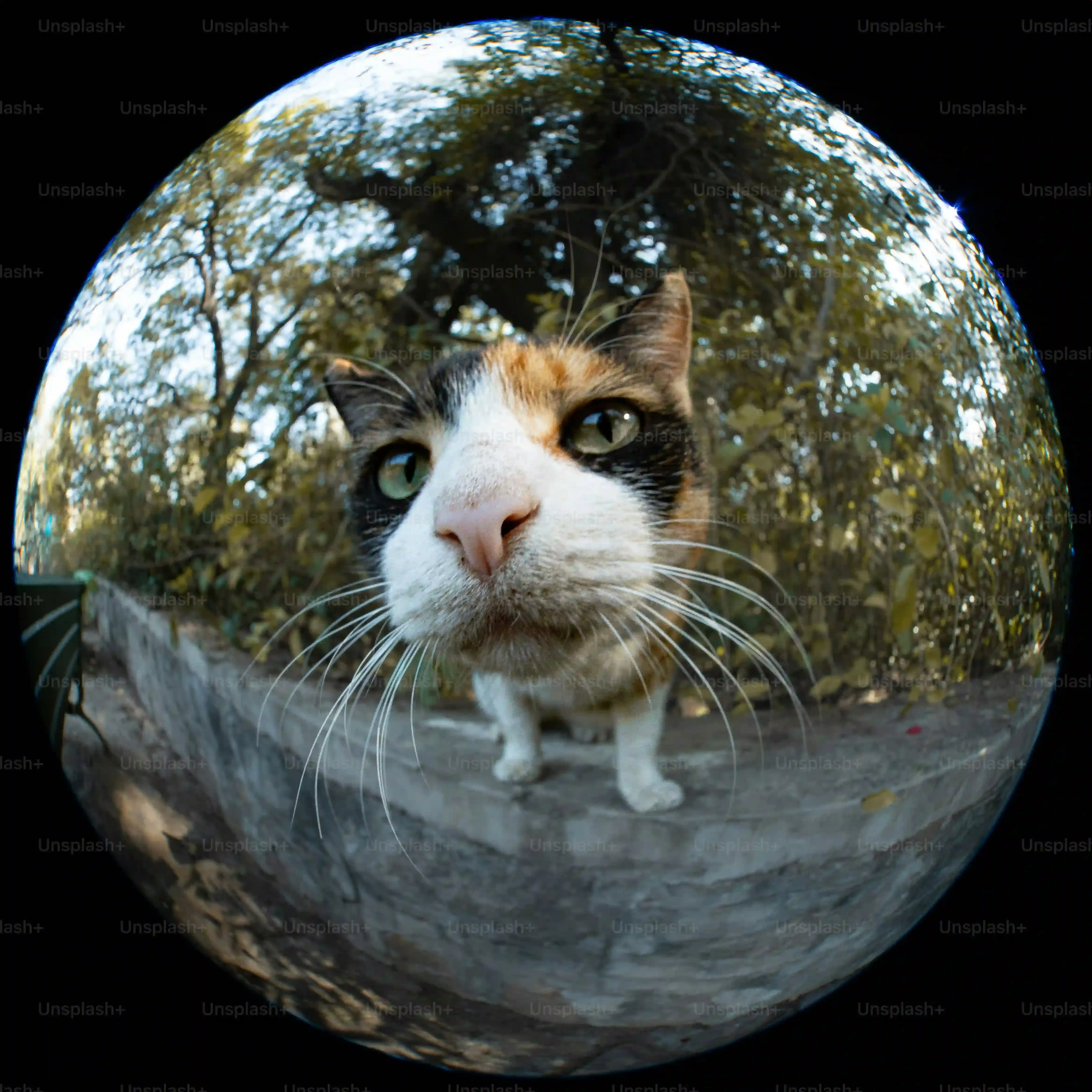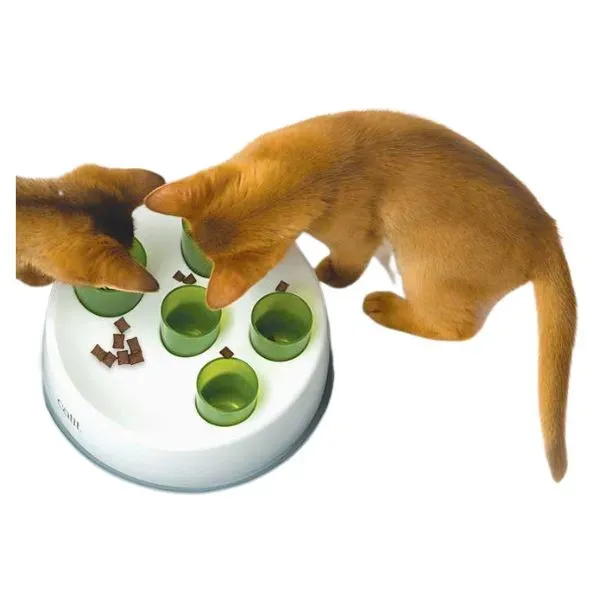Table of Contents
Does your feline friend inhale their food like it's their last meal? Ever watch them finish in seconds and then wander off looking for trouble, or worse, immediately regret their speed-eating? You're not alone. Many indoor cats lack the mental and physical stimulation their wild instincts crave, leading to boredom, overeating, and sometimes, digestive issues. Standard food bowls just don't cut it when you're trying to engage a tiny predator.
Unpacking the Catit Senses 2.0 Digger Interactive Cat Toy

Unpacking the Catit Senses 0 Digger Interactive Cat Toy
First Look: What's in the Box?
So, you ripped open the box expecting some complicated contraption? Not quite. Thepresents itself as a relatively simple, translucent plastic base shaped like a shallow dish with a non-slip mat underneath. Sticking up from the base are five clear tubes of varying heights and widths. Think of them as little towers your cat needs to navigate. It feels sturdy enough, not flimsy junk that will crack after one enthusiastic swipe. The design is clean, functional, and honestly, doesn't look half bad sitting on your floor. It’s designed to integrate with other Catit Senses 2.0 products, which is a neat trick if you're building a whole feline playground, but it works just fine on its own.
The Concept: Making Mealtime a Mission
The core idea behind the Catit Digger is straightforward: make the cat work for their food or treats. Instead of dumping kibble into an open bowl where it's instantly accessible, you drop it into these tubes. Your cat then has to use their paws, whiskers, and brainpower to fish the pieces out. This taps directly into their natural hunting and foraging instincts. It’s supposed to slow down rapid eating, preventing those charming "scarf-and-barf" moments that pet owners know all too well. It provides mental stimulation, turning a mundane activity into a puzzle they have to solve. It's a far cry from the passive experience of eating from a standard dish.
What does this mean for your cat? Potentially less boredom, fewer digestive upsets from eating too fast, and a bit more exercise for their paws and brains. It's a simple concept executed with a few plastic tubes, but the impact on a house cat's daily routine can be significant.
- Non-slip base keeps it from sliding across the floor
- Five tubes of varying heights challenge cats differently
- Clear design lets cats see the food inside
- Easy to disassemble for cleaning
- Designed to prevent whisker fatigue (important for sensitive kitties!)
Beyond the Bowl: Why Your Cat Needs an Interactive Feeder

Beyond the Bowl: Why Your Cat Needs an Interactive Feeder
Look, a regular bowl is fine for holding food, sure. But for a creature hardwired to hunt, stalk, and work for its meals, just plopping kibble into a ceramic dish is like giving a puzzle master a coloring book. It’s boring. Indoor cats, especially, miss out on so much of the natural behavior loop: the stalk, the chase, the capture, the consumption. A standard bowl skips straight to consumption, often at lightning speed. This leads to a host of issues – think vomiting because they ate too fast, weight gain from lack of activity, and behavioral problems stemming from sheer, unadulterated boredom. An interactive feeder, like the, forces them to engage their brains and bodies, mimicking that natural process just enough to make mealtime stimulating and slow things down to a healthier pace. It's less about feeding, more about engaging.
Inside the Catit Senses 2.0 Digger: Features That Get Paws Working

Inside the Catit Senses 0 Digger: Features That Get Paws Working
Alright, let's get down to the nitty-gritty of what makes thetick. It's all about those tubes. You've got five of them, clear plastic cylinders sticking up from the base. They vary in height and width, which is a simple but smart design choice. The wider tubes are easier; the cat can just dip a paw in and scoop. The narrower, taller ones? Those require a bit more dexterity, maybe even some strategy. Your cat has to figure out the best angle, the right paw movement to nudge the kibble down and out. The clear plastic is key – they can see the prize, which motivates them to keep trying. It's not some opaque mystery box; it's a visible challenge, right there in front of their nose.
So, what kind of challenges do these tubes present?
- **Scooping:** The easiest method, usually for the wider tubes.
- **Nudging:** Pushing kibble around until it falls out the top or side.
- **Fishing:** Using claws or paw pads to hook onto pieces.
- **Problem Solving:** Figuring out which tubes are easiest and which require more effort.
Setting Up and Keeping Your Catit Digger Fresh catit senses 2.0 digger interactive cat toy Catit Senses 2.0 Digger interactive cat toy: Turn mealtime into fun, slow feeding play!

Setting Up and Keeping Your Catit Digger Fresh catit senses 0 digger interactive cat toy Catit Senses 2.0 Digger interactive cat toy: Turn mealtime into fun, slow feeding play!
Getting the Digger Ready for Action
So, you've got theout of the box. Good. Setting it up is about as complicated as falling off a log, thankfully. The base is already assembled. All you need to do is decide which tubes you want to use and where to place them. The varying heights and widths offer different challenges. Start with the wider, shorter tubes if your cat is new to this game; it's less frustrating. You can always swap them out later as they get more skilled. Just pop them into the designated holes in the base. They fit snugly but aren't locked in place permanently, which is key for cleaning later. Find a spot where your cat usually eats, but maybe somewhere they won't kick it under the sofa immediately. Fill the tubes with a portion of their dry kibble or some enticing treats. Don't overfill them; you want the cat to be able to see and reach the food. Then, step back and prepare for some potentially awkward, yet ultimately rewarding, paw work.
Keeping Things Clean and Appealing
Let's be real, anything involving cat food needs cleaning. The beauty of theis how easy it is to take apart. You can just lift the tubes straight out of the base. The base itself is a single piece with a non-slip mat you can peel off. A quick wash with warm, soapy water is usually all it takes. Rinse thoroughly, because nobody wants soapy kibble. Make sure everything is completely dry before putting it back together and adding food. This prevents any weird mold or mildew situations, which are decidedly unappealing to both you and your cat. Doing this regularly, maybe once a week or whenever it looks a bit dusty, keeps the digger hygienic and keeps your cat interested. A dirty food puzzle isn't much of an incentive.
Cleaning steps simplified:
- Empty any leftover food.
- Lift out the five tubes.
- Peel off the non-slip base mat.
- Wash all parts with warm, soapy water.
- Rinse thoroughly to remove soap residue.
- Dry completely before reassembling.
- Reassemble and refill with fresh food.
Final Thoughts on the Catit Senses 2.0 Digger
So, there you have it. Theisn't some magic fix for every cat problem, but it's a solid piece of gear for tackling a couple of big ones: boredom and speed eating. It forces your cat to slow down, engage their brain, and actually work a little for those tiny brown pieces they seem to live for. Think of it less as a toy and more as a functional piece of their feeding routine that taps into their natural wiring. If you're tired of cleaning up after a scarf-and-barf incident or watching your perfectly healthy cat act like the lights are off upstairs, giving them a challenge like this might just be the pragmatic solution you need. It's not about spoiling them; it's about providing an environment where they can actually thrive, one kibble at a time.